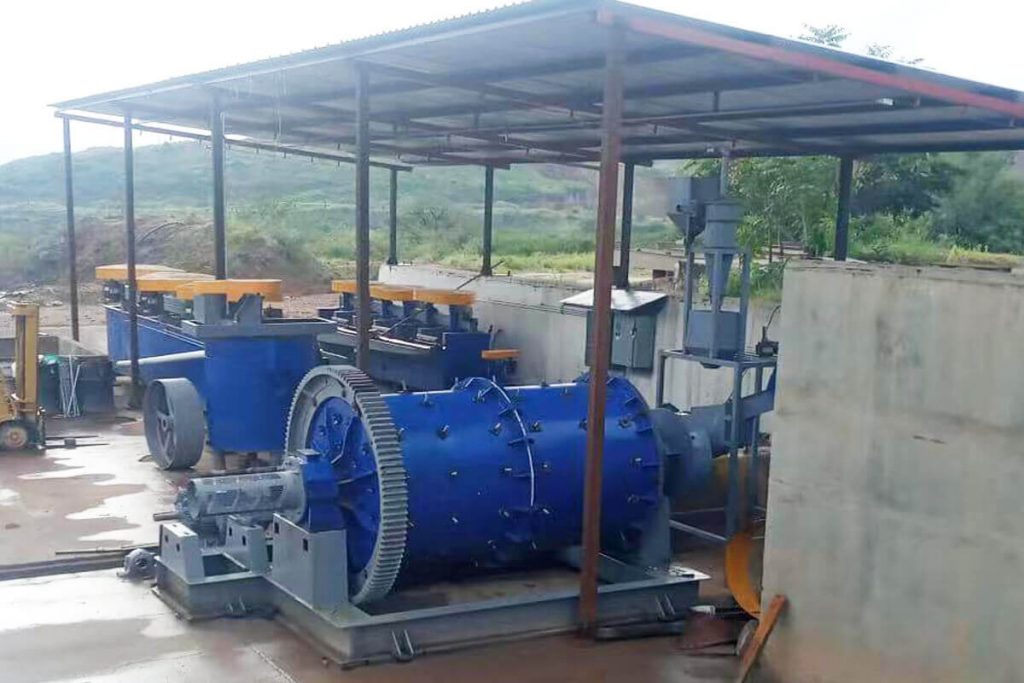Different types of copper ores often contain various associated valuable components. In addition to considering the processing of copper ore, it is also necessary to comprehensively select associated minerals in a targeted manner. This has an important impact on the formulation of mineral processing technology. Among the minerals associated with processing copper ores, lead-zinc ore, molybdenum ore, and nickel ore are more common. This article will briefly discuss the comprehensive beneficiation of copper-associated minerals around these three associated minerals.
Comprehensive beneficiation of associated lead-zinc ores
Associated lead-zinc deposits mainly occur in skarn, pyrite, and sandstone copper deposits. The ore-dressing processes of the three recovered deposits are quite different. Skarn or sandstone copper deposits are usually associated with two minerals, processing lead sulfide and zinc sulfide, and flotation is the main method of choice. In the selection process, you can consider the copper-lead-zinc priority flotation process, copper-lead mixed separation-tailings zinc flotation process, and copper-lead-zinc mixed flotation-copper-lead-zinc separation process, such as flotation – asynchronous mixing of copper, lead, zinc and sulfur – copper, lead, zinc and sulfur separation process, etc.
Massive copper sulfide deposits of volcanic origin usually contain associated zinc, mainly sphalerite or sphalerite, and these deposits contain significant amounts of pyrite or magnetic pyrite. It is easily oxidized during the mining, crushing and grinding processes, and the oxidized surface will seriously affect the flotation speed of copper, zinc and sulfur minerals. In addition, some metal cations in the ore will activate zinc-sulfur minerals and affect the recovery of copper and zinc minerals. Therefore, these ores’ beneficiation process and chemical system are relatively complex, including pretreatment priority flotation, copper-zinc mixed flotation and re-separation, two-stage flotation method, etc.
Comprehensive beneficiation of associated molybdenum ores
Molybdenum minerals are commonly found in porphyry copper deposits, mainly in the form of molybdenite. Copper ore mainly exists in chalcopyrite and speckled copper ore, and the comprehensive recovery value of molybdenum is high. When the associated molybdenum grade reaches 0.01%, molybdenite can be considered for sorting, one of the main sources of molybdenum ore.
The more commonly used methods include copper-molybdenum mixed flotation-copper-molybdenum separation process, coarse concentrate regrinding stage flotation process, partial priority flotation process, fast priority flotation process, etc. When the molybdenum grade in the raw ore is low, it isn’t easy to separate the molybdenum concentrate from the copper-molybdenum mixed concentrate. Usually, a partial priority flotation process or a rapid priority flotation process is used.
Comprehensive beneficiation of associated nickel ores
Associated nickel ore mainly occurs in copper-nickel sulfide copper ore, in which nickel ore mainly exists in pyrite, and copper ore mainly exists in chalcopyrite. Depending on the ore structure, the comprehensive recovery processes for copper-nickel sulfide ores mainly include stage grinding-stage flotation, copper-nickel mixed flotation-copper-nickel separation, copper priority flotation-copper-nickel mixed flotation, flotation, etc.
In production practice, when the copper ore particles in the deposit are fine and the nickel ore flotation speed changes greatly, the stage grinding stage flotation process can obtain nickel concentrates of different grades. When the copper mineral particles are coarse, the copper preferential flotation-copper–nickel mixed flotation process can be used.

The above is the comprehensive mineral processing process of three common minerals associated with copper mines. Flotation beneficiation of copper ore-associated minerals has many advantages in improving copper extraction efficiency and profitability. This method can separate and recover valuable minerals from low-grade ore, reducing the need for large-scale mining operations. There are many reasonable beneficiation methods for extracting associated minerals from copper ores. It usually also includes crushing, grinding, gravity separation and magnetic separation. JXSC supports customized copper ore processing plants and equipment to maximize the recovery of valuable minerals.